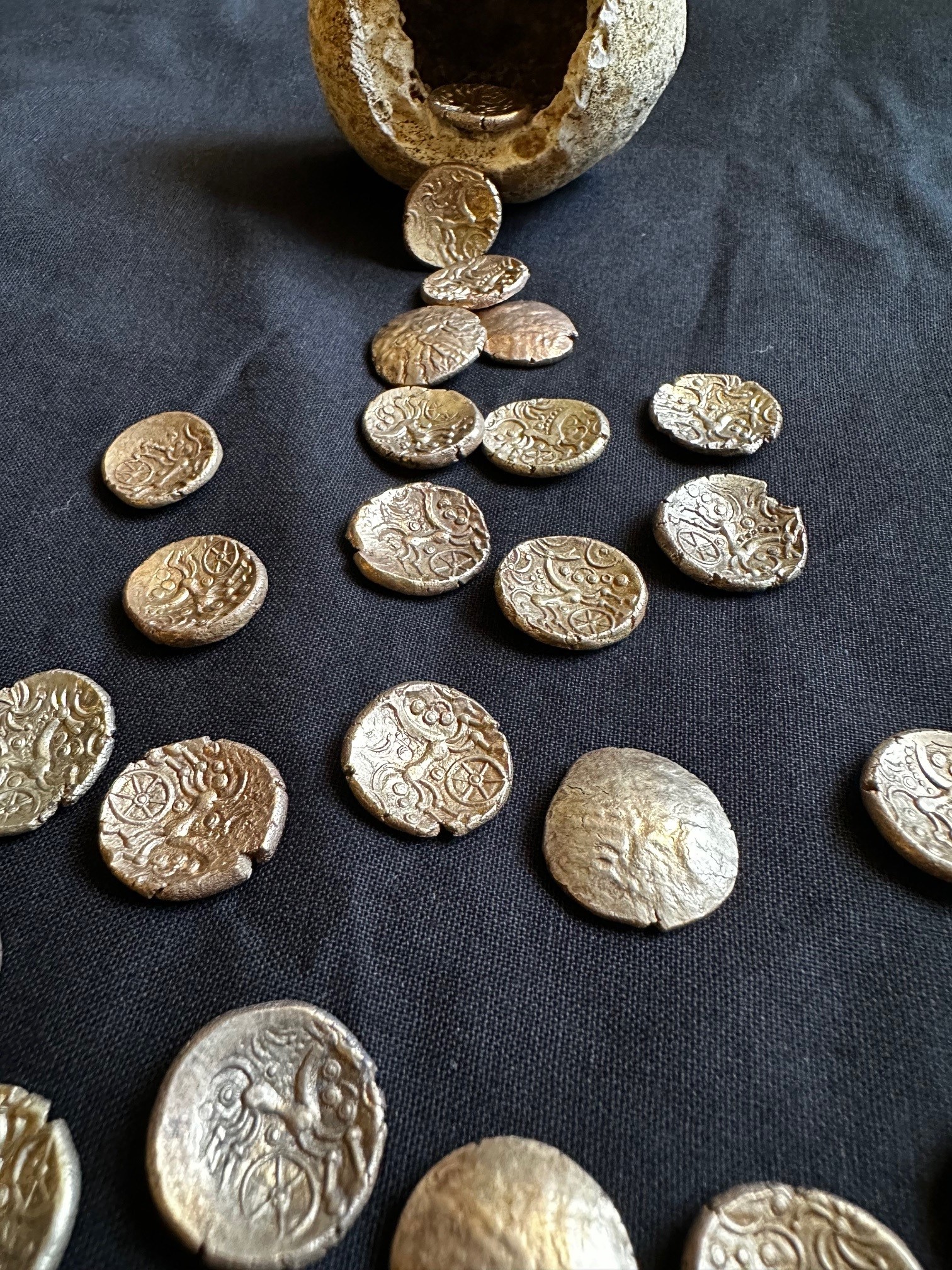Tento systém bych bral, dík za článek 👍🐁
British PAS: 1.7 million total finds, a record 53,000 finds and almost 1,400 treasures in a year
Categories: Search instructions , Nálezy nejenom s detektorem ve Velké Británii a Irsku
The British Museum has recently published its latest annual report on the Portable Antiquities Scheme (PAS), a programme for recording archaeological finds for the public. It shows that 53,490 archaeological finds were reported in 2022, including 1,378 defined treasures, the highest number ever recorded in a single year.
The Portable Antiquities Scheme (PAS) database contains information on more than 1,700,000 objects that are freely accessible to the public. The majority of these finds were discovered using metal detectors - for example 96% of all finds in 2021 and 94% in 2022. Most were discovered on cultivated land where they might otherwise have been irreversibly damaged by agricultural activity. A small proportion came from searching muddy river banks and beaches. Lincolnshire (5,101), Norfolk (4,265) and Suffolk (2,727) were the counties most favoured by detectorists.
The featured artefact in this year's annual report is a small, intricately carved bone memento mori (remember death) type rosary beads, depicting the face of a young woman (probably the Virgin Mary) on one side and a skull (representing mortality) on the other. It was found by Caroline Nunnely while digging through mud on the banks of the Thames in London. Also on display was a 3,000-year-old gold clothespin from Staffordshire, which we wrote about recently. The public were also intrigued by a hoard of 26 Iron Age gold staters found at East Garston in West Berkshire hidden in a flint jar in the late first century BC.
The record figures, according to PAS, highlight the huge contribution the public has made to expanding archaeological knowledge in the UK. Not only is the public becoming more interested in archaeology, they are actively contributing to its discovery and preservation. In addition to this, more and more people are taking part in collections to redeem artefacts for local museums, and visitor numbers and general interest in local history in particular are rising.
"The British Museum is proud to administer the PAS scheme and to oversee the administration of the Treasure Act 1996 in England," explained Mark Jones, Director of the British Museum. "Information about finds is recorded by PAS so that we can deepen our understanding of past peoples, where and how they lived. It reflects all parts of human history, from the Palaeolithic to the modern period, across England and Wales. Most of the recorded finds have been discovered by members of the detectorist community and I would like to thank them in particular for PAS," added the Director.
"The year 2022 was another successful year for the Portable Antiquities Scheme, with a number of records being entered into the databasean additional 53,490 archaeological items were entered, bringing the total number of finds to almost 1.7 million. Although finders have a duty to report finds, the vast majority of finds are reported voluntarily, making this a truly remarkable contribution," said Michael Lewis, Head of PAS and Treasures at the British Museum.
In the UK, the rule was that any metal object that was at least 10% gold or silver by weight and was at least 300 years old at the time of discovery was declared a treasure. Last year, this definition was updated: if the object was found after 30. July 2023, it can be a potential treasure even if it does not meet the above criteria, but it is made at least in part of metal, forIt is at least 200 years old and provides exceptional insight into an aspect of national or regional history, archaeology or culture.
The British Museum promotes a responsible approach to metal detecting in accordance with the Code for Responsible Metal detecting in England and Wales, which helps to protect archaeological sites and develop knowledge of the past. In addition, PAS has run 57 training courses, recruited 199 active volunteers and has also seen an increase in the number of detecting clubs - 147 registered to date.
Roman Nemec
Sources: finds.org.uk, britishmuseum.org

A set of copper alloy vessels was found near Swindon, consisting of a bucket with a handle containing three other vessels and other objects.

The face of a young woman - probably the Virgin Mary.

Detail of a memento mori.

Celtic coin from 60-20 BC found in Wield

A very rare silver brooch from the 2nd to 4th centuries found near Ravensworth, North Yorkshire

A hoard of coins inside a flint box from East Garston

Probably the Virgin Mary, with a skull on the other side.
The article is included in categories:
- Archive of articles > Tutorials and History Hunters Magazine > Search instructions
- Archive of articles > Archaeology > Finds and rescue research abroad > Nálezy nejenom s detektorem ve Velké Británii a Irsku
Post
Ono divoké hledání v UK rozhodně nezmizelo. Jen se chodí v noci nebo dál od lidnatých míst. Jinak je to fajn, ale úplně jiná filozofie, než u nás - mnohem vyšší organizovanost, kluby, byrokracie s povoleními. I na to probírání bahna u Temže musíte mít povolení (a aktuálně se už žádné nové nevydávají).
Jedině lapka stajl 
Hezké, ale jsem rád za stav věci v Čr ,tak jak je.
Kim: jsou různé pohledy na stav věcí, jaký je ten tvůj?
Prostě si chodit hledat a neřešit nějaký PAS třeba











